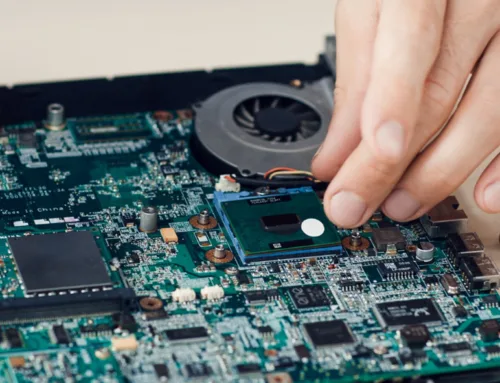“How Long Will My Device Repair Really Take?”: Understanding Turnaround Times & Transparency

Introduction
It’s a question almost every customer asks the moment they hand over their beloved smartphone, laptop, or tablet: “How long will this take?” In today’s fast-paced world, being without a crucial device, even for a few hours, can feel like an eternity. For repair shops, providing clear, realistic, and consistently updated turnaround times isn’t just good service – it’s fundamental to building trust and ensuring customer satisfaction, whether you’re serving someone in Ratnagiri or a client across the globe.
But what actually goes into that estimated repair time? And how can repair shops ensure they’re being as transparent and efficient as possible?
What Factors Influence Device Repair Turnaround Time?
Several elements combine to determine how quickly your device can be returned to you:
- Type and Complexity of Repair:
- Quick Fixes (30 mins – 2 hours): Simple tasks like screen replacements, battery swaps, or port cleanings can often be done very quickly if parts are in stock.
- Moderate Repairs (1-3 days): Issues like water damage, software reinstalls, or less common component replacements often require more extensive diagnostics, cleaning, and testing.
- Complex Repairs (3 days – 2 weeks): Motherboard repairs, advanced data recovery, or troubleshooting intermittent issues can be highly intricate and demand significant technician time and specialized tools.
- Parts Availability:
- The single biggest factor. If a specific part isn’t immediately available in the shop’s inventory, it needs to be ordered, adding procurement and shipping time. Global supply chain fluctuations can also play a role here.
- Repair Shop Workload:
- A busy shop with many devices ahead of yours will naturally have longer wait times, even for straightforward repairs. The efficiency of their internal processes plays a huge role.
- Technician Expertise & Tools:
- Highly skilled technicians with advanced diagnostic equipment can often pinpoint and resolve issues faster. Their specialized knowledge directly impacts Mean Time to Repair (MTTR).
- Diagnostic Time:
- Sometimes, the hardest part isn’t the fix itself, but accurately diagnosing the problem. This initial step can vary from minutes to hours, depending on the issue’s elusive nature.
The Power of Transparency: Why Clear Communication Matters Most
Customers understand that complex repairs take time. What they dislike is uncertainty, silence, or inaccurate estimates. Professional repair shops prioritize transparency because it:
- Builds Trust: Honest communication, even about delays, shows respect for the customer.
- Manages Expectations: Realistic ETAs prevent frustration and negative reviews.
- Reduces Inbound Calls: Proactive updates mean fewer customers calling for status checks, freeing up front-desk staff.
- Enhances Reputation: A shop known for clear communication stands out in a competitive market.
How Professional Repair Shops Ensure Transparency & Efficiency
Top-tier repair businesses implement strategies and utilize tools to master turnaround times and communication:
- Clear Initial Estimates: Providing a realistic timeframe at drop-off, including potential factors that could cause delays (e.g., “This is typically 2-3 days, but could be longer if we need to order a specific part”).
- Proactive Status Updates: Not waiting for the customer to call. Sending regular notifications at key milestones (e.g., “Device received,” “Diagnosis complete,” “Parts ordered,” “Ready for pickup”).
- Dedicated Customer Portals: Giving customers 24/7 access to check the real-time status of their repair online.
- Optimized Internal Workflows: Efficient internal processes for intake, diagnostics, repair assignment, and quality control.
- Robust Inventory Management: Ensuring critical parts are always in stock, or establishing strong supplier relationships for rapid procurement.
BytePhase: Your Partner in Mastering Turnaround Times & Transparency
This is where sophisticated repair shop management software like BytePhase becomes indispensable. BytePhase isn’t just about managing jobs; it’s about empowering your shop to deliver exceptional transparency and efficiency, no matter the scale of your operations, from a bustling shop in Mumbai to a specialized service center in Ratnagiri.
- Automated Status Updates: BytePhase’s core strength lies in its ability to send automated SMS and email notifications to customers at every stage of the repair process. This keeps customers informed without any manual effort from your staff.
- Accurate ETA Generation: By tracking past repair durations and integrating with inventory, BytePhase can help generate more precise Estimated Time of Arrivals (ETAs), improving the reliability of your promises.
- Real-Time Customer Portal: Customers can log into a branded portal (powered by BytePhase) to track their repair status 24/7, reducing inbound calls and enhancing their experience.
- Streamlined Workflow Management: From digital check-ins to technician assignment and progress tracking, BytePhase digitizes your entire workflow, eliminating bottlenecks and ensuring a smooth, efficient process.
- Integrated Inventory Management: Track parts availability, set reorder points, and manage supplier details directly within BytePhase, minimizing delays caused by out-of-stock components.
- Performance Analytics: BytePhase provides insights into average repair times, technician efficiency, and common repair types, helping you continually optimize your operations for faster turnaround.
In the world of electronics repair, time truly is money – both for the customer and for your business. By embracing transparency and leveraging the power of a comprehensive solution like BytePhase, your repair shop can build a reputation for reliability, efficiency, and customer-first service, ensuring your customers always know: “How long will this really take?”












